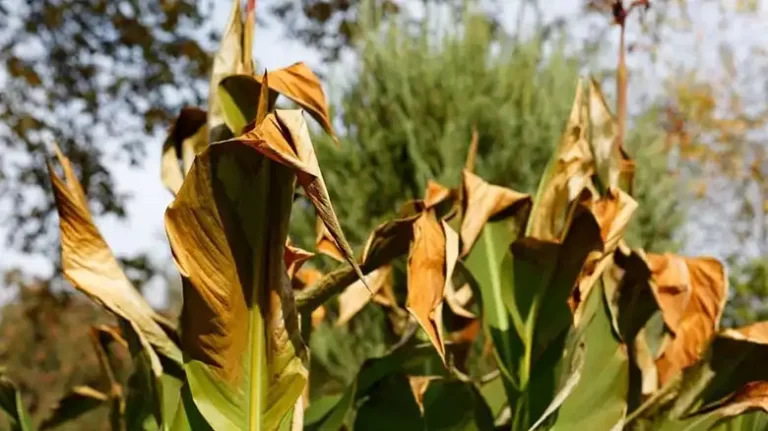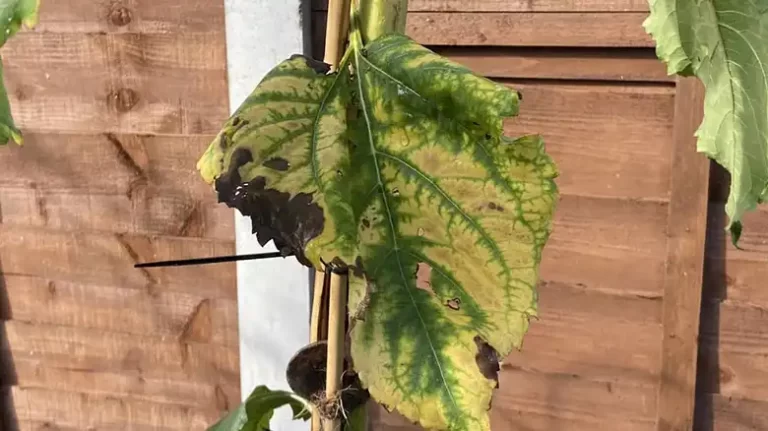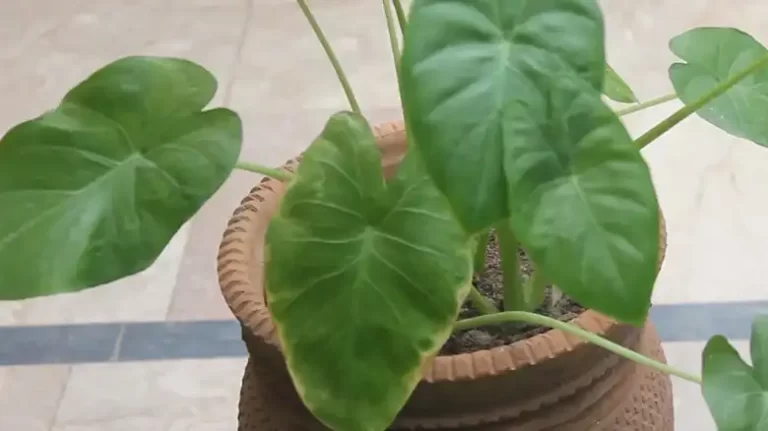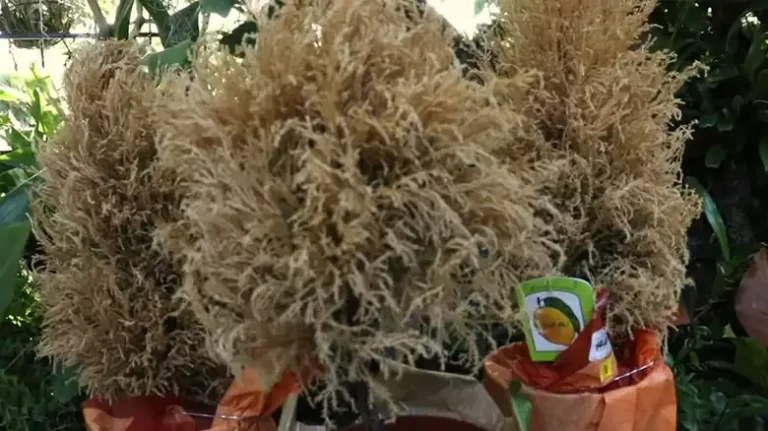How to Tell if a Nandina Is Dead
Gardening enthusiasts often encounter the dilemma of discerning the vitality of their beloved Nandina plants. Nandina, commonly known as heavenly bamboo, is a versatile and attractive shrub, but it can fall victim to various stressors.
In this comprehensive guide, we will explore the intricacies of determining whether your Nandina is thriving or on the brink of demise. From subtle signs of life to common issues, seasonal variations, and precise steps to confirm its condition.
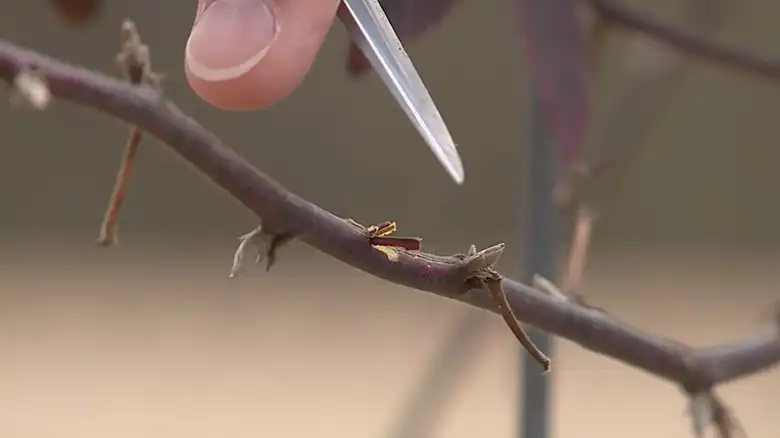
Signs of Life Nandina
When tending to your Nandina, it’s essential to become a detective of sorts, examining the plant closely for subtle signals of vitality. Within the realm of “Signs of Life,” we will delve into the following key indicators that your Nandina may still be thriving:
1. The Vibrancy of Leaves
Dive into the world of Nandina foliage and learn to decipher the language of color, texture, and resilience. Discover how the leaves themselves can reveal the story of your plant’s health.
2. The Promise of New Growth
Explore the fascinating world of Nandina rejuvenation as we unveil the secrets hidden within the emergence of fresh shoots and tender leaves. Witness firsthand how new growth is a testament to life.
3. Unveiling Leaf Texture and Color
Delve deeper into the intricate details of leaf health. Discover how the texture and color of your Nandina’s leaves can provide valuable insights into its overall well-being. Is your plant thriving or struggling? Let the leaves tell you the tale.
Common Problems of Nandina
Nandina, also known as heavenly bamboo, is a stunning and versatile shrub that can enhance any garden or landscape. However, like all living things, Nandinas are susceptible to a range of challenges that can compromise their health and vitality.
In this section, we will explore the common problems that Nandina enthusiasts may encounter, providing valuable insights into how to identify, address, and prevent these issues.
Pest Infestations
Aphids are tiny, sap-sucking insects that can cluster on Nandina leaves, causing them to curl and distort. Learn how to spot and control these troublesome pests.
Scale insects are notorious for their armor-like shells, which make them difficult to detect. Discover the signs of scale infestations and effective control measures.
Spider mites are minuscule arachnids that can spin fine webs on Nandina leaves and suck the plant’s juices. Find out how to spot and manage these elusive invaders.
Diseases
Nandinas can fall prey to various fungal diseases, leading to unsightly leaf spots and compromised health. Learn to recognize the symptoms and apply suitable treatments.
Bacterial blights can cause browning of Nandina leaves and affect overall plant vigor. Explore how to diagnose and combat these bacterial infections effectively.
Watering Issues
Overly saturated soil can lead to root rot, a serious condition that can spell disaster for your Nandina. Discover how to avoid overwatering and its detrimental consequences.
Inadequate moisture can result in stress and parched foliage. Learn how to determine if your Nandina is thirsty and develop a proper watering regimen to keep it healthy.
Environmental Stressors
Nandinas are generally hardy, but extreme cold or intense heat can challenge their resilience. Understand how temperature fluctuations can impact your shrub and take precautions accordingly.
Excessive sun exposure can cause sunburn on Nandina leaves, leading to browning and damage. Learn how to protect your plant from harmful UV rays.
Soil Conditions
Inadequate soil drainage can result in waterlogged roots and subsequent root rot. Discover the importance of well-draining soil and how to improve soil conditions for your Nandina.
Nandinas thrive in slightly acidic to neutral soils. Learn how to test and adjust the pH level of your soil to create an ideal growing environment for your shrub.
Seasonal Considerations
Understanding how Nandinas respond to the changing seasons is pivotal for ensuring their health and longevity. In this section, we delve into the nuances of how these resilient shrubs adapt to each season and the essential care measures you should undertake to support them year-round.
Spring Awakening
Discover the signs of life in your Nandina as it awakens from its winter slumber. Learn how to promote healthy spring growth and when to perform crucial pruning to shape your plant.
Summer Resilience
Navigate the challenges of scorching summer temperatures and keep your Nandina thriving. Explore strategies for adequate watering, providing essential shade, and safeguarding against common pests during this season.
Fall’s Aesthetic Transition
As fall arrives, witness the spectacular transformation of Nandina foliage to vibrant red and bronze hues. Find out how light pruning can help maintain your Nandina’s shape and health during this transitional season.
Winter Survival
Discover how Nandinas weather the cold months and the steps you can take to ensure their survival through winter. Learn about mulching techniques and why it’s essential to avoid heavy pruning during this season.
Steps to Confirm if a Nandina is Dead
From scrutinizing the foliage to assessing the soil and considering environmental factors, these systematic steps will empower you with the knowledge needed to make an informed decision about the health of your Nandina.
Whether you’re a seasoned gardener or a newcomer to the world of horticulture, these steps provide valuable insights into the vitality of your beloved Nandina plant.
Step 1: Scrutinize the Foliage
Begin your assessment by closely examining the leaves of your Nandina. This step involves tactile and visual observations, allowing you to gauge the condition of the foliage and its potential for recovery.
Texture and Resilience: Feel the leaves to assess their texture and pliability. Healthy leaves should be firm and resilient to the touch.
Coloration: Examine the color of the leaves. Vibrant shades of green with subtle red undertones are indicative of a thriving Nandina, while discoloration may signal issues.
Signs of Withering: Look for any signs of withering, curling, or wilting in the leaves, as these can be telltale signs of a struggling plant.
Step 2: Investigate the Stems and Branches
Moving on, focus your attention on the stems and branches of your Nandina. This step involves testing their flexibility and conducting a scratch test to assess the plant’s overall health.
Branch Flexibility: Gently bend a few branches to determine their flexibility. A living Nandina will have supple branches that bend without breaking.
Scratch Test: Perform a scratch test by lightly scraping the bark with your fingernail. The presence or absence of green tissue beneath the bark provides crucial information about the condition of the branches.
Step 3: Check the Soil
Soil condition is a fundamental factor in the health of your Nandina. This step involves evaluating the moisture content and overall condition of the soil surrounding your plant.
Soil Moisture Assessment: Insert your finger into the soil to a depth of about two inches. Dry soil at this depth may indicate inadequate watering, while excessively soggy soil can be a sign of overwatering or poor drainage.
Root Health: Examine the soil for any signs of root rot, which can be fatal to your Nandina. A foul odor, mushy roots, or waterlogged soil are red flags that require immediate attention.
Step 4: Evaluate Environmental Factors
Consider the broader environmental factors that may be impacting your Nandina’s well-being. Understanding its hardiness zone and exposure to sunlight or shade is essential.
Hardiness Zone: Verify whether your Nandina is planted in a suitable hardiness zone. Extreme temperatures can stress the plant, so ensure it’s in an appropriate location.
Sunlight and Shade: Assess the amount of sunlight or shade your Nandina receives. Imbalances in light exposure can lead to issues such as sunburn or stunted growth.
Step 5: Address Common Problems
If you’ve detected signs of pests or diseases during your assessment, this step involves taking immediate action to identify the specific issue and apply the necessary treatment.
Pest Identification: Identify the type of pests affecting your Nandina, whether it’s aphids, scale insects, or spider mites. Swift intervention can prevent further damage.
Disease Diagnosis: If your Nandina displays symptoms of disease, identify the specific ailment and implement the appropriate treatment regimen.
Step 6: Review Seasonal Changes
Consider the current season and its impact on your Nandina. Adjust your expectations and care routines based on the season to ensure the best possible outcome for your plant.
Spring: Spring is a time of rejuvenation for Nandinas. Prune lightly to encourage healthy growth and shape the plant.
Summer: Protect your Nandina from excessive heat and pests during the summer months. Adequate watering and shade can make a significant difference.
Fall: Embrace the natural color changes in Nandina leaves during fall. Light pruning and preparation for winter are essential.
Winter: Insulate your Nandina from harsh winter conditions with a layer of mulch. Minimize pruning during this season to avoid additional stress.
Usual Questions
Q1: How often should I water my Nandina?
A1: Nandinas prefer consistently moist but well-draining soil. Water deeply when the top inch of soil feels dry. Adjust the frequency based on your climate, with more watering during hot, dry spells and less during cooler, wetter periods.
Q2: What is the ideal location for planting a Nandina in my garden?
A2: Nandinas thrive in partial to full sun but can tolerate light shade. Plant them in well-drained soil with good air circulation. Avoid planting them in areas prone to waterlogging.
Q3: Can I trim or prune my Nandina at any time of the year?
A3: It’s best to prune Nandinas during late winter or early spring before new growth begins. This allows you to shape the plant and remove dead or diseased branches without disrupting its growth cycle.
Q4: How can I protect my Nandina from winter frost and cold damage?
A4: Applying a layer of mulch around the base of the plant can help insulate the roots. Additionally, consider covering your Nandina with a frost cloth or burlap during severe cold snaps.
Q5: What are some organic methods for controlling common Nandina pests like aphids and spider mites?
A5: You can use neem oil, insecticidal soap, or a strong blast of water to dislodge and deter pests. Regularly inspect your plant for early signs of infestations to address them promptly.
Q6: My Nandina has black spots on the leaves. What could be causing this, and how should I treat it?
A6: Black spots on Nandina leaves may indicate a fungal disease, such as anthracnose. To treat it, prune affected branches, remove fallen leaves, and apply a fungicide as directed on the product label.
Q7: Are all Nandina varieties equally hardy in different climates?
A7: Nandina varieties vary in hardiness. Check the specific hardiness zone recommendations for the particular variety you have, and select one suitable for your climate.
Q8: Can I revive a Nandina that has been severely damaged by frost or drought?
A8: Reviving a severely damaged Nandina is possible but may require patience and diligent care. Prune away dead branches, adjust watering and fertilizing, and provide protection from extreme conditions.
Q9: How can I encourage more vibrant red or bronze foliage in my Nandina during the fall season?
A9: To enhance the fall color of your Nandina, ensure it receives adequate sunlight. Stress, such as slightly reduced watering, can also intensify the red and bronze hues.
Q10: What is the average lifespan of a healthy Nandina plant?
A10: Nandinas can live for several decades when well-cared for. Proper pruning, disease and pest management, and regular assessment of its health can contribute to a long and vibrant life for your Nandina.
Final Thoughts
In the realm of gardening, the ability to discern the signs of life in your Nandina is a valuable skill that ensures the well-being of this beautiful shrub. By closely examining leaves, investigating stems and branches, checking soil conditions, evaluating environmental factors, and promptly addressing common problems.
